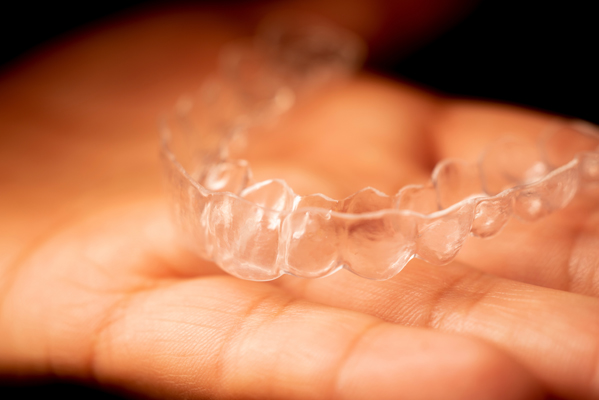Important TMJ FAQ’s

The temporomandibular joint, or TMJ, is one of the most important and sensitive joints in the human body. The TMJ connects the jaw and temporal bones of your skull. You can feel it moving if you put your fingers on the jaw in front of your ears. It helps to move the jaw sideways and up and down.
What Is TMJ syndrome?
TMJ is a sensitive joint that can sustain damage due to any injury or disease. The damages will lead to pain in the joint and surrounding areas. The pain and stiffness in the joint are known as TMJ syndrome.
What are the causes?
The causes of TMJ disorder may result from excessive nail biting, gum chewing, degenerative joint diseases, trauma/injury to the mouth, poor posture, stress, teeth grinding or rheumatoid arthritis.
Who is at risk?
TMJ disorder is a common problem that occurs mostly between the ages of 20 to 40; women are 4 times more prone to this syndrome.
What are the symptoms of TMJ disorder?
There are a lot of symptoms of TMJ disorder from stiffness, headaches, dizziness, ear ache, clicking sounds when eating and talking, difficulty in chewing, popping sound in the ear, sore jaw muscles, or pain in the temple, neck or shoulder.
What is the treatment for TMJ?
While TMJ is quite easy to treat through home remedies, people need to seek professional medical treatments if home remedies are ineffective. In extreme cases a joint replacement surgery might be the solution of TMJ disorder.
What are the home remedies for TMJ?
Home remedies can treat normal cases of TMJ easily, the home remedies include,
Applying cold packs or heat pack to the affected joint
Relaxation techniques such as massage can also release stress
Eating soft foods will prevent further stress build up
Aroma therapy or massage of some essential oils like lavender can also relax muscles and provide pain relief
What are medical treatments of TMJ syndrome?
Medical treatments for TMJ include physiotherapy, splint therapy, pain relieving medication, and arthroscopy. In rare cases, joint replacement surgery may be the treatment of choice.
What is splint therapy?
A splint is a mouth guard or a bite guard that one wears over teeth to prevent grinding, clenching of the jaw and other movements that can set off TMJ. The splint can be soft or hard after we customize it for the patient's needs.
When the patient wears the splint, it relaxes the muscles in the mouth and also prevents teeth from other side effects of grinding. The splint supports the bite in the most favorable position to release tension in the jaw.
In which cases surgery is required?
In severe cases of TMJ, surgery might be necessary. There are two types of surgeries:
TMJ arthroscopy is a minor invasive surgery that can take place in a dental clinic. The recovery time is only one week.
Sometimes a total joint replacement is necessary as the last resort for treating TMJ syndrome. An oral surgeon will carry out this surgery that may require four to six weeks to heal.
Request a TMJ dental appointment here: https://www.queensfamilydental.com or call Queens Family Dental at (718) 690-9597 for an appointment in our Astoria dental office.
Recent Posts
The average person probably couldn't point out their temporomandibular joints (TMJ) if you asked them to, but these are two of the most active connections in your body. Every time you chew, talk, or swallow, your TMJ is hard at work.The temporomandibular joint disorder occurs when there is something wrong with your jaw muscles or…
Clear braces are very similar to traditional metal braces, except clear braces have either tooth-colored or clear brackets. These brackets are made out of ceramic or another similar material. Because the brackets and wires blend in with your teeth, this type of braces offers a nearly unnoticeable solution for straightening your teeth, no matter what…
Understanding how Invisalign works is the first thing you must do when considering this popular teeth straightening option. You will undergo an initial evaluation performed by a dental professional, who will then assign you a certain number of custom-made aligner sets, which need to be switched out every two weeks. After using the last set…
Full mouth reconstruction involves replacing and repairing damaged or missing teeth. A treatment plan includes a variety of different treatments, and one common procedure is known as dental bridge treatment. This review takes a closer look at how general dentists use dental bridges to replace teeth during full mouth reconstruction. Most patients have several available treatment…


